Are you looking for the easiest vegetables to grow in your container garden? Then, here is a list of 19 beginner-friendly veggies for you to try.
I’ve included growing requirements for each vegetable, tips on varieties, and simple ways to deal with common issues that might arise.
You can also look at our Step-By-Step Beginner’s Guide, which outlines a simple process to efficiently set up and manage your container garden.
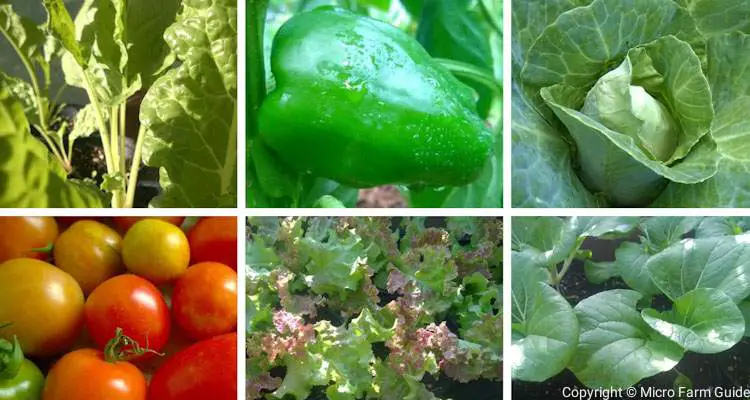
However, I know you’re here for the list. So, keep reading or click the link below to jump straight to the vegetable of your choice.
Note: This list contains general information on the various plants, with links to instructions on how to grow and care for each. If you would like some additional tips to improve your container garden, read this.
1. Lettuce
Lettuce is a favorite of many new gardeners and chefs alike. It is easy to grow, quick to harvest, and can be used in salads, sandwiches, and wraps.
It is a shallow-rooted, leafy vegetable that grows best in well-drained soils and full sunlight. Most lettuce varieties grow well in containers, provided the pots are suitably sized.
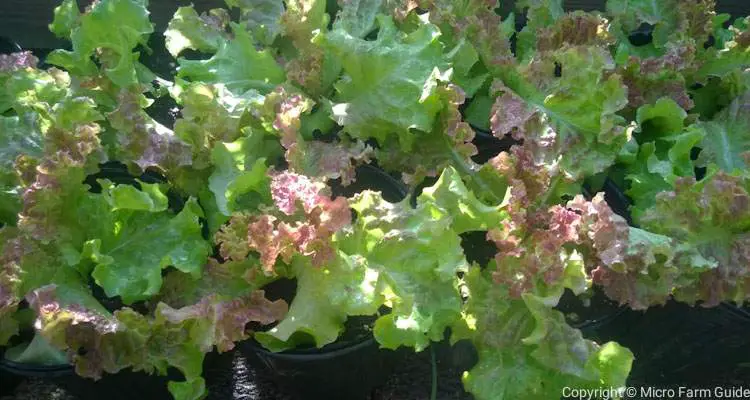
Lettuce is a heavy feeder and needs a consistent supply of nitrogen-rich fertilizer for leaf development and tends to become yellow if these needs are unmet.
On our farm, we mainly grow Minetto and Red Rapid. However, we occasionally add Black Seeded Simpson and Cos to our salad mix.
While lettuce can grow in small 6″ containers, most varieties prefer the slightly larger 8 inches pots due to their ability to retain more moisture.
See Also: How To Grow Lettuce In Containers (Step By Step)
2. Cabbages
Cabbage is well-known for its nutritional benefits. They are used extensively in salads, soups, and ferments.
They grow best in full sunlight and require growing media that are well-drained and full of organic matter. You can use containers that are at least 12” deep. However, you should consider larger containers based on the variety.
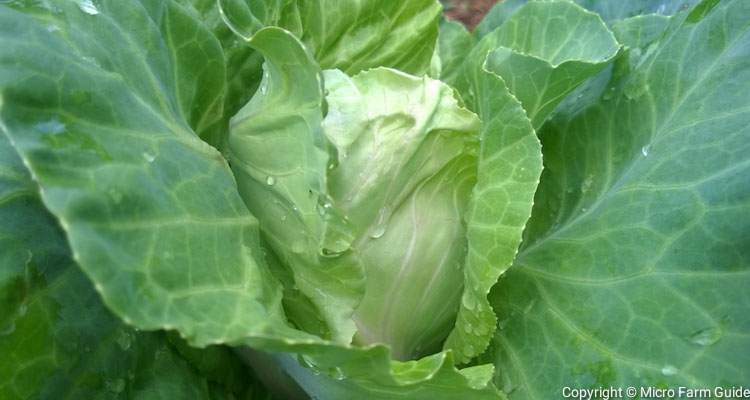
Cabbage can take up to 3 months from seeds to harvest, requiring lots of nutrients and moisture to encourage the healthy growth of leaves and the formation of solid heads.
Ideally, you should add compost and balanced organic fertilizer to the potting soil at least once every two to three weeks after heavy rains.
There are wide varieties to choose from. However, we mainly grow Early Jersey, a fast-growing, compact variety. Yes, it usually is small but develops larger heads under the favorable conditions provided by the containers.
3. Sweet Peppers (Bell Peppers)
Sweet peppers are delicacies used in everything from salads to pizzas. They can be tricky to grow in-ground, but they enjoy growing in pots.
They thrive in well-drained soils and require plenty of nutrients, including calcium, potassium, and magnesium.
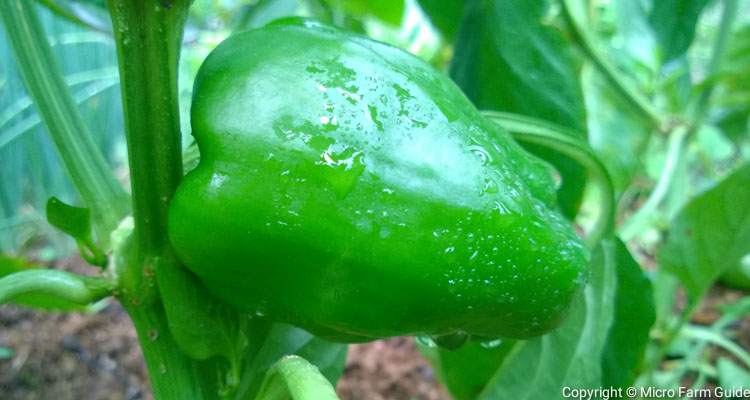
I must note that sweet peppers can take a while to mature, as much as 90 days, if not longer. You must ensure they receive the nutrients, moisture, and space required to develop correctly during this time.
California Giant is one of the most popular varieties. However, we usually grow Keystone Giant, a large, tasty Bell Pepper, perfect for salads.
Unfortunately, Sweet Peppers are prone to fungal diseases and stem boring insects, which can be avoided in your container garden.
4. Tomatoes
Tomatoes are technically fruits but used as vegetables. They are packed with nutrients and are much tastier when allowed to ripen on the vine.
They are heat-loving plants that thrive in full sunlight and grow best in fertile, well-drained soil. 5-Gallon containers are needed for most tomato varieties, except for micro draft cultivars that can do well in much smaller pots.
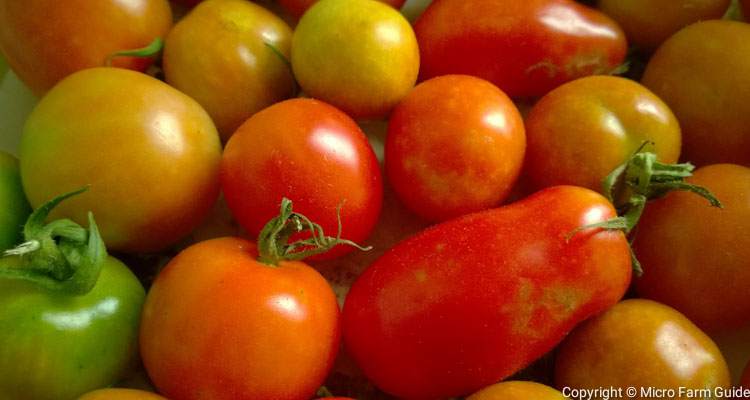
You should choose determinate and micro draft varieties for your container garden. Avoid indeterminate, vining varieties unless you have the space and structures in place for them to spread.
Tomatoes need a lot of nutrients to support their growth and fruit production. As a result, they require a steady supply of balanced fertilizers containing calcium and other minerals.
They are prone to various nutrient deficiencies and fungal diseases, many of which can be avoided with some care and attention.
5. Cucumber
Cucumbers are fast-growing vining plants whose edible “fruit” consists primarily of water. They are favored for their cleansing properties and are easy to grow with numerous varieties.
Cucumbers grow best in sunny locations and require moist, well-drained soils or potting media. They produce relatively shallow roots and a vine that can easily be trained to grow vertically, where space is limited.
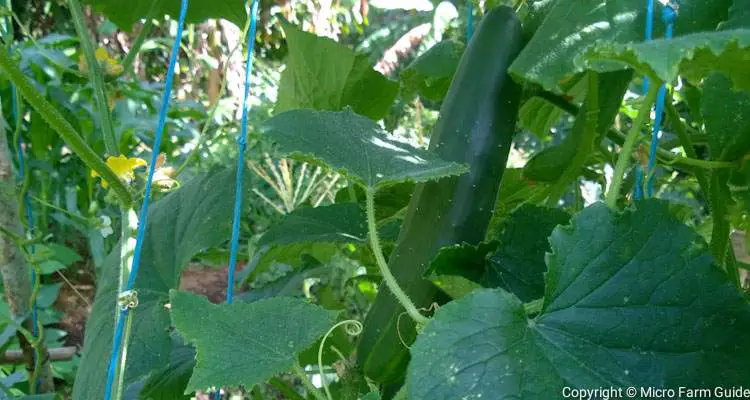
They need a lot of Nitrogen to support their initial growth. Preferably, they should receive nutrients as part of a balanced fertilizer or compost routine.
There are many cucumbers to choose from, including burpless, slicing, and pickling. They range in color, texture, size, and shape. We mainly grow Athena and Poinsette but occasionally experiment with other varieties on a smaller scale.
One common issue we face is the prevalence of squash bugs at different times of the year. You will need to remove these bugs whenever you see them. They usually lay their eggs on the underside of leaves.
6. Carrots
I was excited to learn that carrots can grow ideally in pots since our garden consists mainly of clayey soil with tons of rocks.
Carrots are tender crops that require a deep, well-drained growing media, free of large debris. Typically, you should use containers that are at least 12” tall. However, you can use a shorter pot if you intend to harvest baby carrots.
Ideally, you should amend the potting soil with well-rotted compost and microorganism to ensure a consistent supply of nutrients. Avoid nitrogen-rich fertilizer unless your aim is to harvest carrot tops.
While most carrots will grow in containers, shorter varieties such as Oxheart are more suited. Personally, we use whatever seeds are available at the garden centers and harvest them when they are at a suitable length.
Carrots can take up to 80 days to be ready for harvest, but you can harvest them sooner as delicious baby carrots.
7. Kale
Kale is considered a superfood and is commonly used in wraps, salads, and even soups. It is well-known for its crunchy textures and various colors, adding nutrients to multiple dishes.
Like many other leafy vegetables, Kale grows best in well-drained, moist, fertile soils. Kale can grow large, with some varieties being biennial and even perennial. As a result, you should plant Kale in 12″ pots and be ready to transfer it to larger containers if necessary.
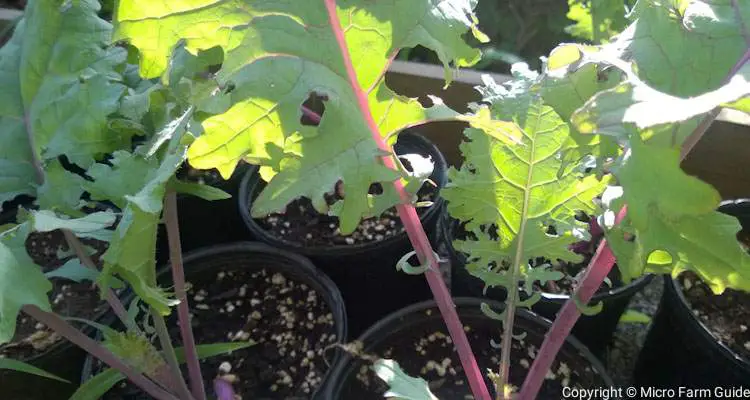
Kale is a heavy feeder that requires a constant supply of fertilizer and moisture. Apply compost and organic fertilizers to the plant every two to three weeks. Ideally, you should not allow the container to dry out. Pay close attention to the leaves during hot spells.
You will generally see curly green Kale at the supermarket, but this is only one of the wide tasty varieties. Red Russian and Dinosaur Kale are two you can experiment with. However, if you can obtain perennial tree kale, take good care of it.
The only downside of growing Kale is that it attracts leaf miners and aphids like a magnet. If leaf miners are a problem in your area, choose rough textured varieties such as Curly and Dinosaur. You will have to control ants and monitor your growing conditions if aphids become an issue.
8. Beets
Beets contain essential nutrients such as vitamins, potassium, iron, and dietary fiber. They are usually cooked but can also be juiced and added to smoothies or other blends. Surprisingly, the leaves are also edible and can be used as a substitute for Kale and Chard.
Beets are cool weather, deep-rooted plants. They grow best in deep, partially shaded, well-drained soils. Their roots can reach up to 4 feet deep but can adapt to grow in 6” containers. However, beets can take about 60 days from seed to harvest, so I suggest a slightly larger planter if possible.
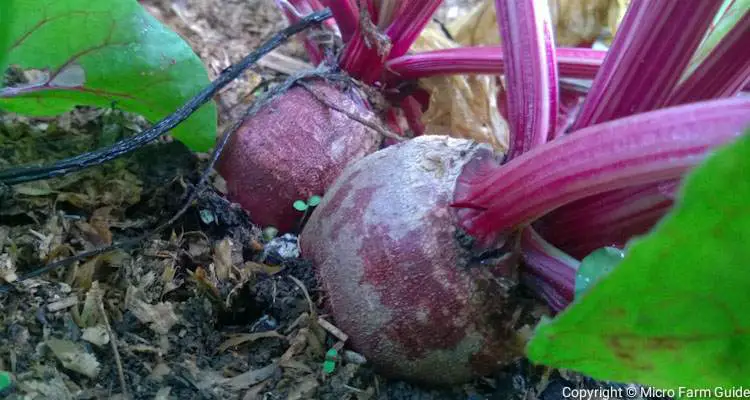
Ideally, you should grow beets in nutrients rich soil; amending potting media with compost should do the trick. However, you can also apply a balanced fertilizer, such as seaweed-based liquid fertilizer containing Boron and other trace minerals.
Detroit Dark Red and Early Wonder are two of the most popular Beetroot varieties to grow at home. Feel free to experiment with other varieties if available. You might be amazed by the results!
Unfortunately, beets are prone to some bacterial and fungal diseases, both of which should not be much of an issue when grown in pots. However, you will need to pay attention to weak or abnormal growth and periodically inspect the leaves for signs of insect damage.
9. Pak Choi (Bok Choy)
Pal Choi, or Bok Choy, is a popular ingredient in Asian cuisine. It is easy to grow in containers and can be harvested within a few short weeks.
Pak Choy is not very picky about growing conditions and can grow well in 6” pots, provided it receives enough moisture and nutrients. It grows rapidly and is ready to harvest within 6 weeks after planting seeds.
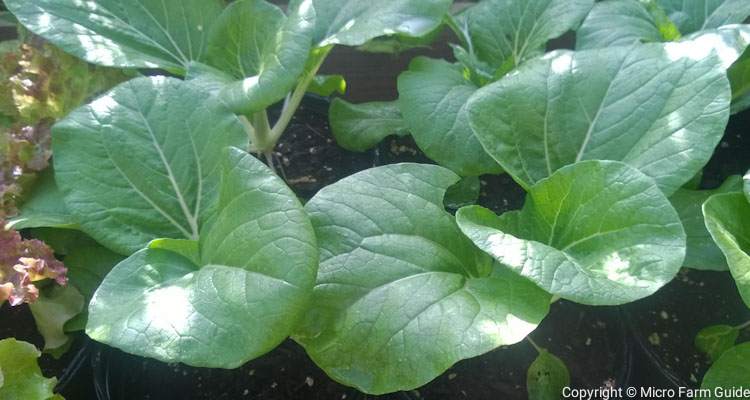
Bok Choy thrives in fertile, well-drained soil, growing lush green leaves, requiring a constant supply of nutrients with trace minerals.
On our farm, we grow white stemmed Pak Choi from seeds purchased over 10 years ago. These grow reasonably large, so you might consider a dwarf variety for your container garden or use slightly larger containers.
The only issue is that grasshoppers and potato bugs are attracted to their beautiful green leaves. Fortunately, aphids are not usually a problem, except during the dry season.
10. Broccoli
Broccoli is as tasty as it is nutritious. It is well-known for its health benefits and is often featured in healthy recipes. Traditionally, growing in the heat of the tropics is challenging, making it a perfect candidate for container gardening.
Broccoli is a sizeable cool-weather plant that requires a 5-gallon container to reach its full potential. It consists of almost 90% water and favors a moist, well-drained growing mix but can tolerate occasional temperature increases.
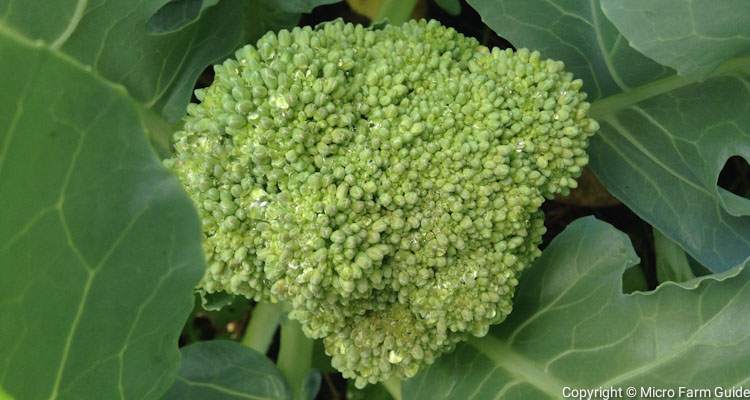
Like other Brassicas, Broccoli is a heavy feeder and requires a constant supply of nutrients to develop properly. This can be supplied through compost and routine application of organic liquid fertilizer, such as Fish Emulsion, which is rich in Nitrogen, calcium, and potassium.
Sun King and Green Emperor are two heat tolerant varieties used in warmer climates. They Require full sun and can be harvested in as little as 70 days. There are several other varieties, but choose those suited for your climate or risk premature bolting.
Broccoli generally prefers cool weather, but they don’t grow properly in entirely shaded areas. However, a 20 to 50% shade cloth can protect them during hot spells. Just ensure that you don’t allow their containers to dry out.
11. Beans
Beans are stapled foods in many countries, providing proteins, starch, and numerous other vitamins and minerals. You can purchase dried or canned beans in most stores, but nothing beats the nutrients and culinary value of freshly picked, homegrown beans.
Beans grow well in deep, moist, well-aerated soils. Use large containers at least 15″ wide, such as a 5-gallon bucket. This will help to keep the growing medium from drying out during the 55 to 65 days they take to mature.
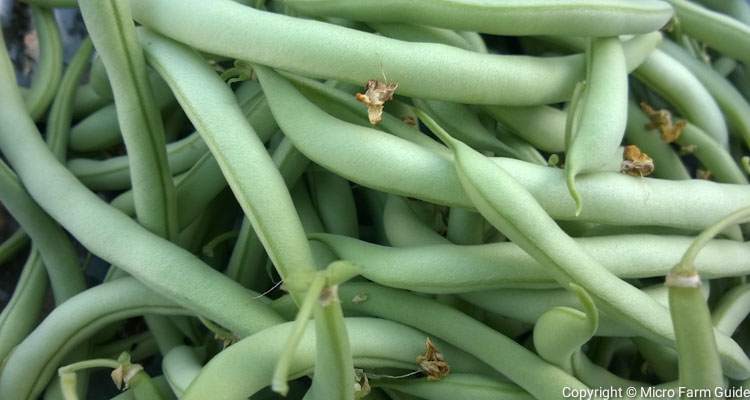
Surprisingly, they grow best in fertile soil. As a result, you will need to amend your potting mix with bioactive compost and supply the plant with a balanced fertilizer. If you choose the organic route, ensure that you add a microorganism solution to the soil.
You can grow about any Bean plant in containers, provided they are large enough for the particular variety. However, I would suggest dwarf and bush bean varieties.
Two common issues with bean plants are powdery mildew and poor root development. However, you can usually fix this by observing proper spacing and watering practices.
12. Cauliflowers
Cauliflower is a nutrient-dense culinary oddity available in numerous colors and sizes. It is easy to grow but requires some special attention in its final stage before harvest.
Like most Cruciferous vegetables, Cauliflowers grow best in fertile, well-drained soil, which receives a constant moisture supply. They are excellent weather crops that enjoy sunlight until they start to flower. Typically, these plants can take up to 130 days from seeds to harvest.
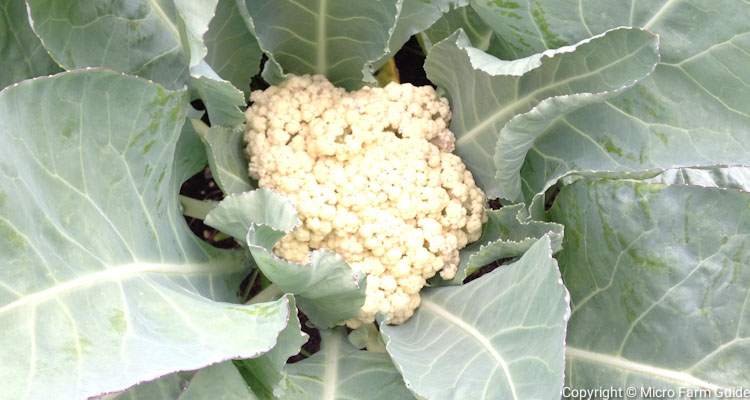
Cauliflowers are heavy feeders that can grow pretty large in suitable conditions. As a result, you should ensure they have enough nutrients, moisture, and space to grow. Use containers at least 12″ wide for small varieties, amending the soil with compost and organic fertilizer as needed.
Usually, we grow the Snowball cultivar. However, if you like to get more creative, you should consider Cheddar, Flame Star, Depurple, and Attribute varieties. Yes, they are as beautiful as their names suggest and, in some cases, require less attention than colorless varieties.
As I mentioned before, Cauliflower requires some attention after they start to flower. At this point, thetheiersyemh6easily spoil from exposure to too much water or sunlight.
13. Spinach
Spinach is not the most well-loved vegetable but is definitely one of the most nutritious. It is rich in iron and an excellent source of various vitamins and essential minerals.
Spinach is a cool-season, leafy vegetable and grows best in fertile, well-drained soils. It is sensitive to warm temperatures and requires a constant supply of moisture. You can grow it 6 to 8 inches deep in wide containers, but monitor to ensure the media doesn’t dry out.
Like most leafy vegetables, Spinach thrives in nutrient-rich soils. As a result, you should add compost and other organic matter to the potting mix. Apply fertilizer or similar amendment when necessary, paying close attention to signs of deficiencies.
You should choose smaller varieties such as Melody and Baby Leaf for your container garden. However, you can grow larger varieties if you have the space. Best of all, you can start harvesting leaves in as little as 45 days.
As mentioned before, Spinach is very sensitive to temperatures over 80°F. In such instances, ensure they receive enough water. Move the containers to a partially shaded area if necessary.
14. Okra
Okra is a popular vegetable used in Asian and Cajun cuisine. It is usually steamed or fried and often used in stews, soups, and sauces. It can be delicious if prepared correctly but is usually an acquired taste.
Traditionally, Okra is grown in-ground but can thrive in containers as long as it receives enough space, nutrients, and suitable growing media. Ideally, you should grow Okra in a 5-gallon container, ensuring the potting soil is moist and well-drained.
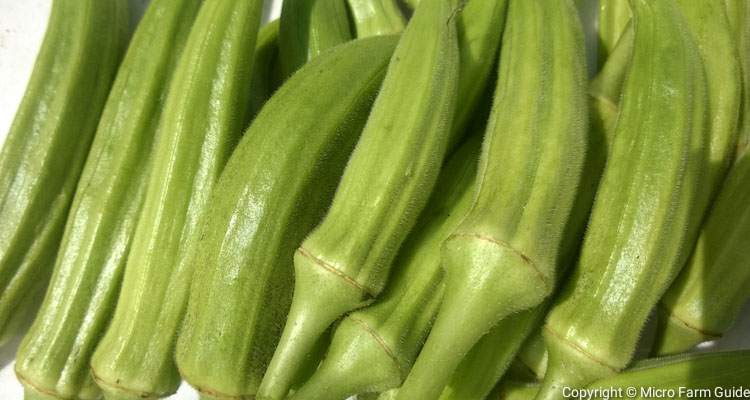
Okra requires nutrient-rich soil since it grows rapidly, producing edible pods I’m about 2 months and continues producing for weeks on end. Provide the plant with compost and organic fertilizer every two to three weeks, and more often if necessary.
Due to their size and production, we usually grow Clemson Spineless and Red Burgundy Varieties. However, there are wide other varieties to choose from.
Okra is in the same family as the Hibiscus and Roselle flowers. As a result, you should monitor the plant for signs of sucking insects such as Milea Bugs and the ants that protect them.
15. Caribbean Seasoning peppers
Seasoning Peppers are valued by anyone who prepares Caribbean cuisine. They have a similar aroma to some of the hottest peppers in the world without the heat.
Caribbean Seasoning Peppers love sunny, warm climates. They grow well in fertile, moist, well-drained soils and can tolerate the occasional drying. Just don’t make it a habit. They can grow large and should be “potted up” when necessary.
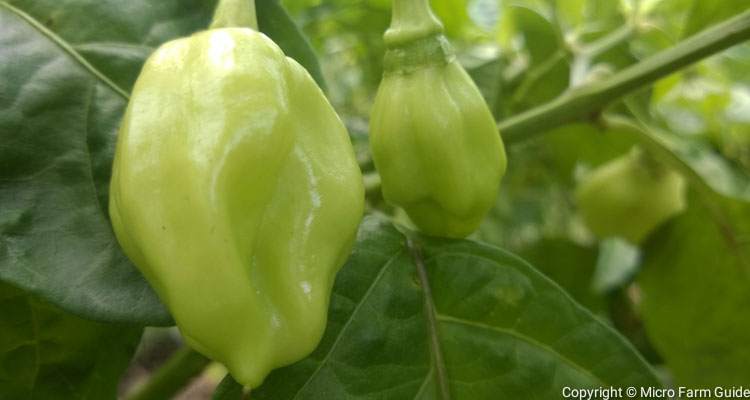
Heavy feeders thrive in nutrient-rich soils and require a constant supply of balanced fertilizers. As a result, you should apply compost or other organic amendments every 3 to 4 weeks,
Caribbean Seasoning Peppers tend to have slightly different characteristics depending on the island. However, if you grow them from seeds, do not be surprised if they are spicier than expected.
In the past, our peppers were attacked by stem borers and rare fungal diseases when grown in-ground. However, they seem to thrive in pots where the conditions are easily adjusted to their liking.
17. Swiss Chard
Swiss Chard is a delicious vegetable with an interesting flavor. It’s almost like a cross between Kale and Spinach, but closer to beet greens. It is popular among chefs and gardeners in cooler climates but can grow in warmer temperatures.
Swiss Chard is easy to grow in containers, provided the soil is well-drained and full of organic material such as humus or compost. It can grow in smaller 6” containers but should be potted up to larger containers when necessary.
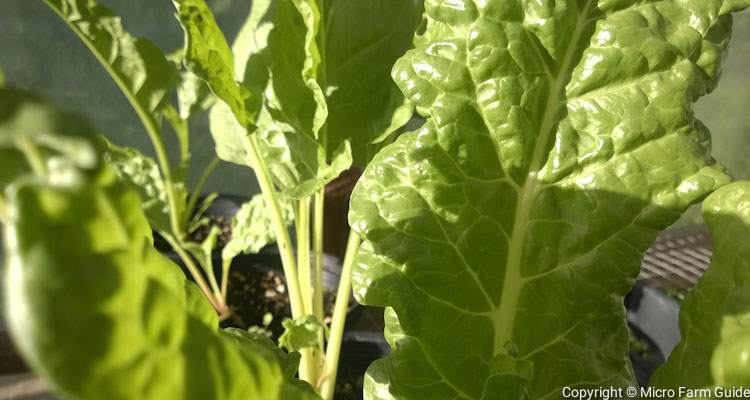
It is a fast-growing leafy green and requires a steady supply of nutrients. Ideally, you should apply a suitable organic fertilizer every two to three weeks. However, the plants retain their shiny green leaves even in less than ideal conditions.
Personally, we grow Forkhook Giant and Lucullus. If you can, try to purchase Rainbow chard, a mixture of numerous varieties, resulting in a beautiful array of colors and flavors.
In the past, we’ve had issues with caterpillars and water damage when grown in-ground, but this has lessened since we started growing pots. Surprisingly, grasshopper seems to avoid them, but that can be due to having more favorable plants nearby.
18. Peas
Pea is a versatile little plant to grow in your container gardens, producing edible shoots and pods. They are packed with nutrients, primarily protein, and can be used in various dishes.
Peas thrive in excellent, deep, well-drained soils that were amended with organic material such as compost. Peas should be grown in large, deep containers and can be harvested About 70 days after planting.
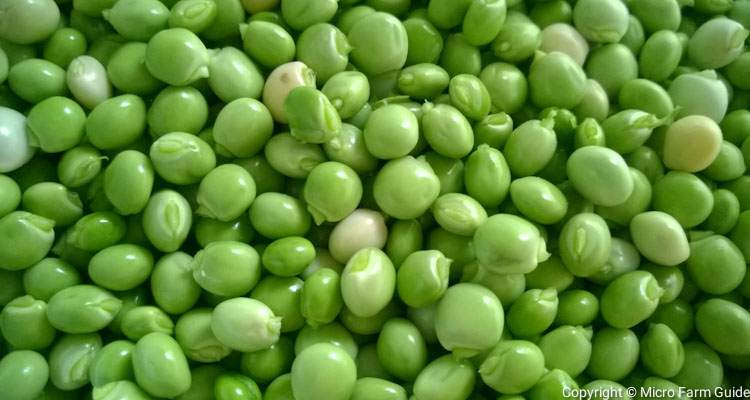
Most varieties of peas require little to no additional fertilizer apart from the organic material used to amend it. However, they will benefit from a light application of microorganism solution to ensure that the organic nutrients are available to the plants.
One of our favorite peas to grow in containers is Sugar Snap, which is commonly available at most seed stores. However, I’d suggest leaving pigeon peas for in-ground gardens.
Most pea plants prefer sunny locations but not high temperatures. We have encountered this issue lately, with our average daily temperatures bordering 90°F throughout the year. As a result, you might consider a shade cloth if the heat becomes unbearable.
19. Radishes
Radish is a fast-growing, edible root vegetable that you can harvest within 28 days. It is one of those vegetables which you grow just because you can.
Like most other plants on the list, radishes grow best in well-drained soils rich in organic matter and microorganisms. They do not require additional fertilizer if the potting soil has been amended with a balanced organic fertilizer.
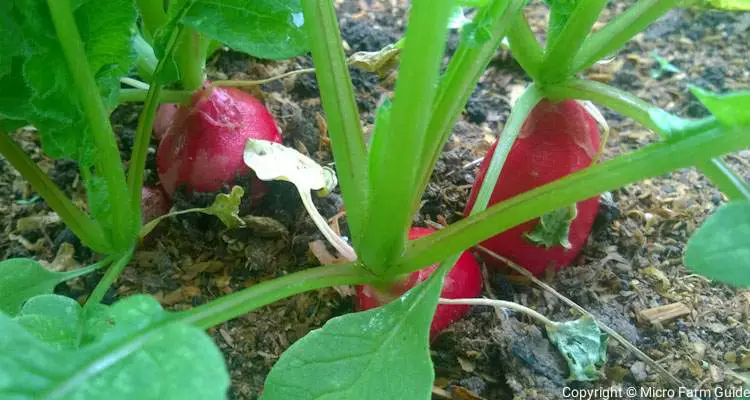
Radishes are harvested primarily for their root bulbs. As a result, you should not use fertilizers that are high in Nitrogen. Add a balanced fertilizer or soil amendment such as Bone meal if necessary.
Most varieties of radishes, such as Cherry Belle, can grow in relatively shallow pots. However, I suggest you use containers at least 6″ deep and plant the radish seeds directly.
In some instances, radishes might fail to produce bulbs. This is usually due to overcrowding. While I am a fan of the Multi-Sow Technique, I’ve found that providing individual radish plants with enough space to develop is best.
Final Thoughts
Container Gardening opens a world of possibilities for growing vegetables in small spaces. It allows certain plants to thrive in unfavorable locations they would generally fail.
However, finding suitable containers, potting mixes, and varieties of plants can be expensive. Thankfully, you can do your best with the resources at hand until you can access ideal equipment and materials.
While writing this article, I was fascinated by the number of vegetables we grow on the farm, albeit not at once. This made me wonder, what if we attempted to grow them all simultaneously? We’ll need some more pots!
Related Questions
How Deep Should A Container Be For A Vegetable Garden?
Most vegetables require containers at least 6 to 12 inches deep for proper root development. However, larger containers demand less attention while encouraging the development of more robust plants with the potential for higher yield.
References
Texas A&M AgriLife Extension. Container Gardening. agrilifeextension.tamu.edu. Accessed August 2022
NC State Extension. Plants Grown in Containers. content.ces.ncsu.edu. Accessed August 2022
